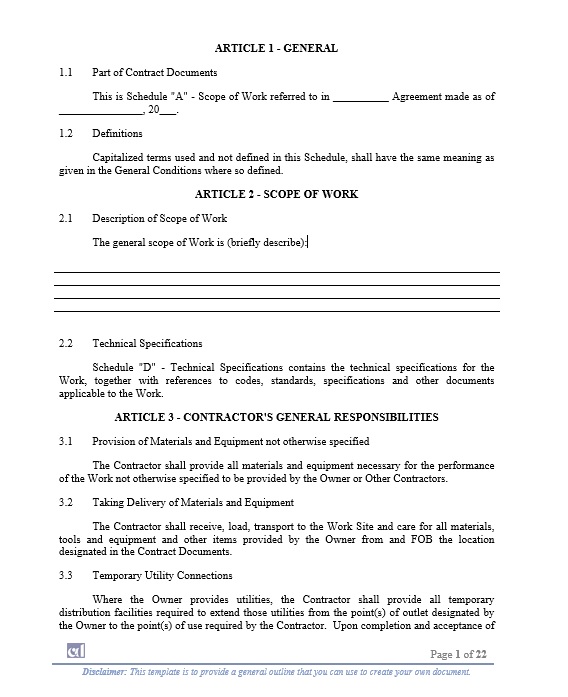The Scope of Work (SOW) is a critical component in industrial project tenders, outlining the responsibilities, deliverables, and expectations for all stakeholders involved. A well-defined SOW ensures transparency, reduces ambiguity, and sets the foundation for successful project execution. Here, we present an effective template and key considerations for drafting the Scope of Work for industrial project tenders.

Purpose of the Scope of Work
The SOW serves as the contractual guide that defines the project’s framework. It provides clarity to contractors, subcontractors, and project owners, covering what is expected, when, and how the work will be completed. This document also aids in evaluating tender proposals, as it establishes measurable standards for comparison and ensures alignment with the project goals.
Key Elements of the Scope of Work for Industrial Projects
- Introduction and Project Overview
Provide a brief description of the project, including objectives, such as increasing production capacity, enhancing safety systems, or commissioning new facilities; project location and specifications, such as a petrochemical plant, power station, or manufacturing unit; and, finally, the expected timeline for project completion.
- Scope of Work Definition
Detail the responsibilities of the contractor, including:- Engineering and design work.Procurement and supply of equipment and materials.Construction, installation, and commissioning activities.Testing, inspection, and quality assurance.
- Deliverables
List all expected deliverables with due dates, including:- Drawings, models, and technical documentation.Machinery, tools, or materials supplied.Installation reports and final commissioning certificates.
- Standards and Compliance
Specify industry codes, safety standards, and regulatory requirements.- Examples: ISO, ASTM, ASME, or local environmental and safety laws.
- Include quality benchmarks for all project phases.
- Project Milestones and Timeline
Provide a timeline with clear milestones for each project phase, such as:- Design and engineering: 3 months.
- Procurement and delivery: 5 months.
- Construction and installation: 6 months.
- Testing and commissioning: 1 month.
- Roles and Responsibilities
Define the roles of all involved parties, including the contractor, project owner, consultants, and subcontractors.
- Work Conditions
Describe the site conditions, accessibility, and any environmental constraints. Include:- Climate and terrain specifics.
- Security requirements.
- Working hours or local labor laws.
- Payment Terms
Link payments to project milestones and deliverables:- Initial payment upon contract award: 10%.
- Progress payments for completed milestones: 60%.
- Final payment after commissioning and acceptance: 30%.
- Performance Metrics and Penalties
To effectively monitor progress, define every detail for evaluating contractor performance, such as consistently meeting deadlines, adhering to quality and safety standards, and ensuring budget compliance. Additionally, include penalties for delays or non-compliance to maintain accountability.
- Change Management
To ensure alignment with project goals, establish a clear process for managing scope changes by including steps such as identifying, thoroughly evaluating, and formally approving modifications.- Documentation requirements.
- Approval processes.
- Cost and schedule adjustments.
Benefits of a Well-Defined Scope of Work
- Clarity: Minimizes misunderstandings among stakeholders.
- Efficiency: Streamlines the tender evaluation process.
- Risk Mitigation: Reduces potential for disputes and cost overruns.
- Accountability: Provides a basis for tracking performance and ensuring compliance.
Conclusion
A comprehensive and detailed Scope of Work is the backbone of any industrial project tender. It ensures all parties are aligned and provides a clear roadmap for project execution. By using this SOW template as a guideline, you can not only achieve project objectives but also minimize risks and uncertainties effectively.
has been added to your cart!
have been added to your cart!



